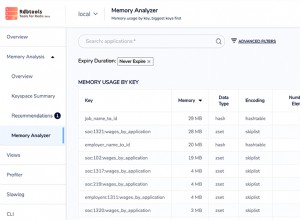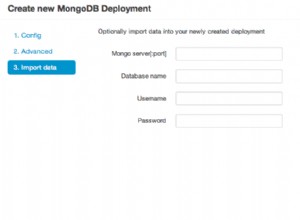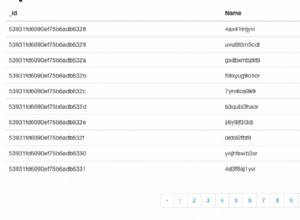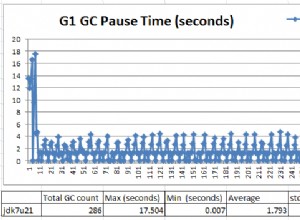EDIT :à partir de la version 2.0.1 du pilote, le FindFluent objet renvoyé par IMongoCollection.Find a un ToString approprié qui inclut le filtre, mais aussi une projection, un tri, etc. (le cas échéant).
Alors, pour ça :
var findFluent = collection.
Find(x => hashValues.Contains(x.UrlHash) && x.ProductTopic == topicId,
new FindOptions {MaxTime = TimeSpan.FromSeconds(1)}).
Project(x => x.UrlHash).
Sort(Builders<ProductMapping>.Sort.Descending(x => x.ProductTopic)).
Skip(6).
Limit(7);
Console.WriteLine(findFluent);
Le résultat serait :
find({ "UrlHash" : { "$in" : [4, 5, 6, 7, 8] }, "ProductTopic" : 200 }, { "UrlHash" : 1, "_id" : 0 }).
sort({ "ProductTopic" : -1 }).
skip(6).
limit(7).
maxTime(1000)
Eh bien, vous savez déjà que vous faites une recherche, donc je suppose que vous voulez savoir à quoi ressemble la requête.
Vous pouvez facilement le faire directement à partir de votre code en utilisant IFindFluent.Filter :
BsonDocument filterDocument = findFluent.Filter.Render(
collection.DocumentSerializer,
collection.Settings.SerializerRegistry);
Console.WriteLine(filterDocument);
La sortie dans votre cas (dépend de hashValues et topicId bien sûr):
{ "UrlHash" : { "$in" : [4, 5, 6, 7, 8, 9] }, "ProductTopic" : 200 }




